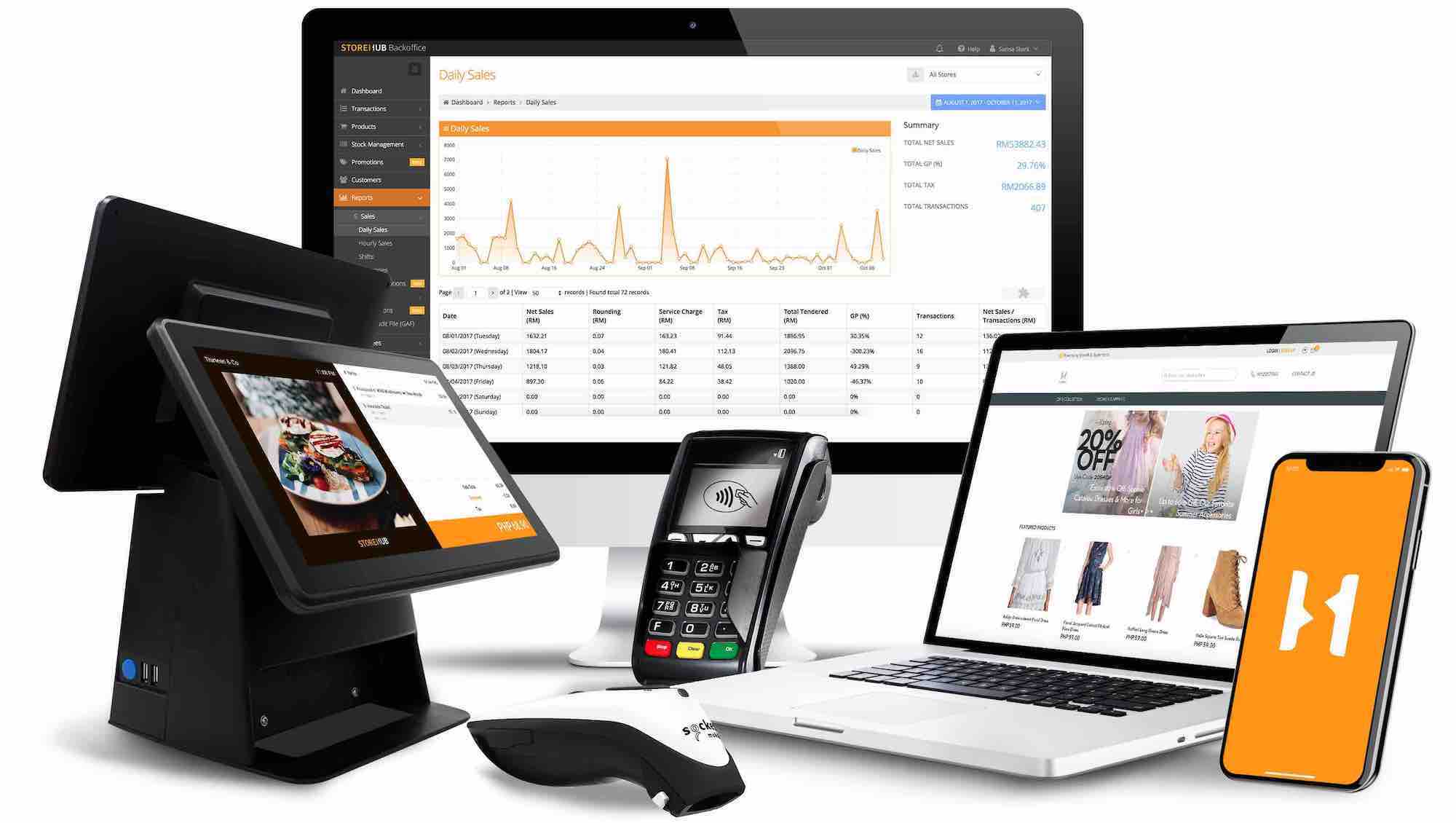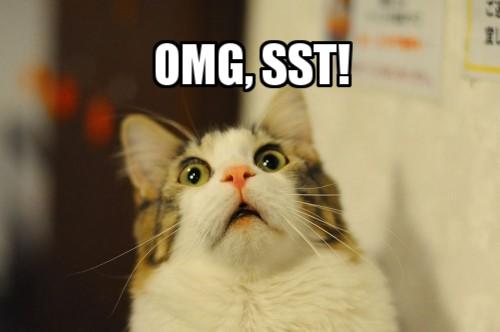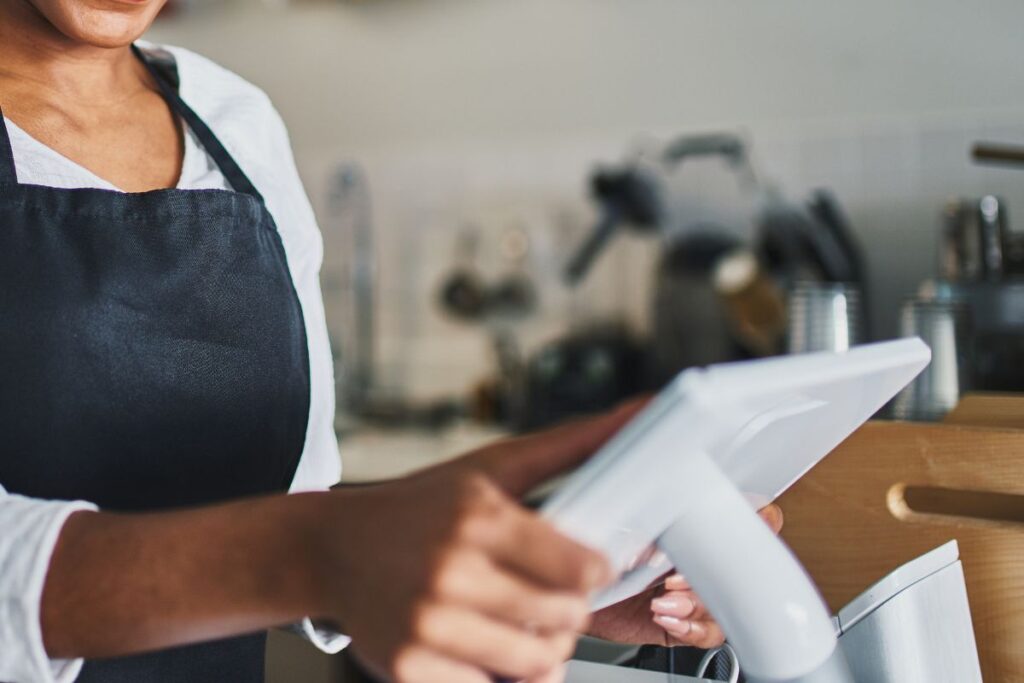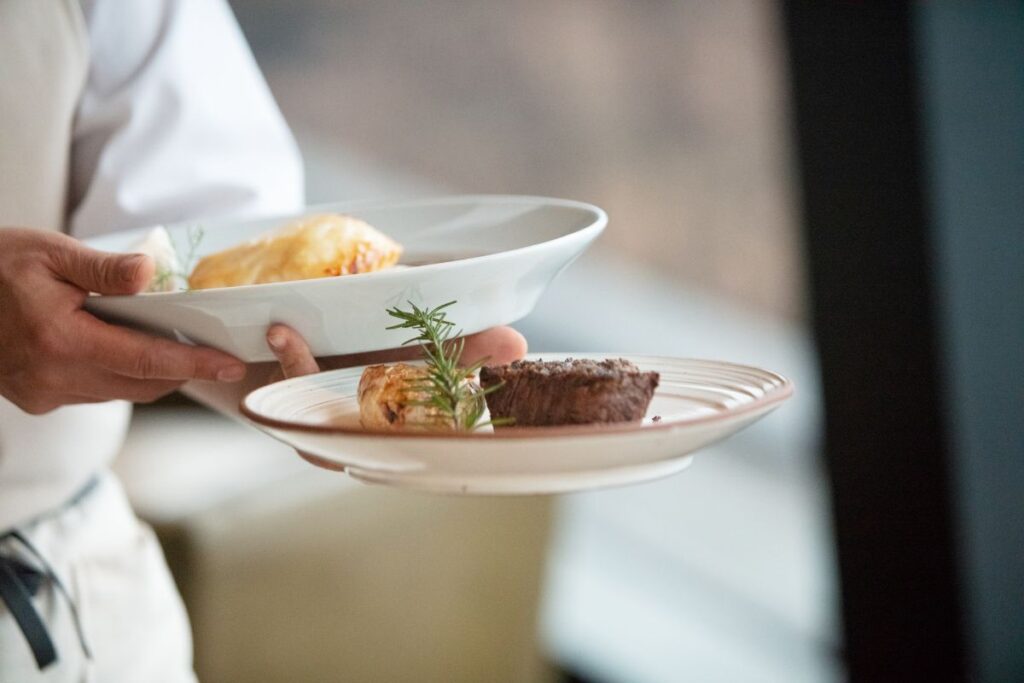30 Aug, 2018:
- The SST threshold for F&B has been increased from RM1mil to RM1.5mil
SST is taking over GST!
On Thursday, 17 May, the Ministry of Finance officially announced the reintroduction of the Sales and Services Tax (SST), which would replace the zero-rated Goods and Services Tax (GST).
So yeah, here comes another form of tax!
Yup, this again.
At this point, some things are still unclear though the SST will be starting in a couple of days. Everyone’s waiting for confirmation and we know some business owners are feeling confused.
Not to worry, we were there to help when you needed a guide on zero-rated GST, and we’re here to help again with a quick SST guide that will answer your most burning questions:
- What the h** is going on?
- How does this affect my business?
- What should I do?
1. So what’s going on with GST and SST?
First, a quick history lesson.
SST 1.0 was first introduced in the 1970s.
Sales Tax was implemented in 1972 and Service Tax was implemented a few years later in 1975.
The GST then replaced the SST on April 2015.
Fast forward 3 years down the road to 2018, and a new version of the SST will be reintroduced in September.
The SST is replacing GST as part of a fiscal reform initiative by Malaysia’s new federal government, Pakatan Harapan, which took over in May 2018 after winning the 14th General Election.
Okay, lesson over.
 Business owners in Malaysia:
Business owners in Malaysia:
2. What’s the difference between GST and SST?
Here are some major differences between the GST and the SST that you should know as a business owner:
- GST – All goods and services are subject to GST except: exempted supplies, zero-rated GST, relief of GST
- SST – Only goods/services that fall under the SST list are to be taxed
- GST is a multi-stage 6% Goods And Services tax that is charged and collected at every stage of the supply chain – manufacturer, wholesalers and consumers. It’s a tax on the final consumption or sale of goods and services
- SST is a single-stage Sales And Services tax that is charged at a manufacturer/importer and consumer level:
- manufacturers/importers are charged sales tax
- consumers are charged service tax when consuming taxable services (eg: buying a coffee)
- SST is made up of two separate taxes that apply to a narrower set of goods and services as compared to GST:
- 6% service tax on services provided in Malaysia (with a specific rate for credit/charged card)
- 10% sales tax, which will be charged on selected products and services
Actually, less businesses will be affected by the SST as compared to the GST because the SST is only a single-stage tax.
And while the GST had 472,000 registered businesses, the SST 2.0 is expected to only have less than 90,000 registered businesses.
So you may not even have to register for it!
Whoo!
Unlike the GST, which had different thresholds for different industries, the SST’s threshold is standardised at RM500,000 for all the industries except F&B, which has a RM1,000,000 threshold.
So good news to restaurant/cafe owners!
You don’t have to charge tax if you’ve yet to hit RM1mil in total sales for the past 12 months.
Also, our accountant friends tell us that cash flow management will be better for you as the tax amount you pay to Customs is now based on payment received, unlike the GST’s invoice-based tax payment.
This means that you only pay tax for what you’ve been paid by your customer (though you do have to do invoice-based tax payment after 12 months have passed and your customer has yet to pay you – chase them!).
Accounting Tip: Choose cash reports (cash basis accounting) instead of accrual reports (accrual accounting) in your accounting software.
FYI: You can’t claim tax input under the SST, except for manufacturers who deal with sales tax.
3. Does the SST apply to my business?
 Typically, the Zero-Rated (ZR) code is reserved for zero-rated supplies such as beef, rice, sugar, water and electricity.
Typically, the Zero-Rated (ZR) code is reserved for zero-rated supplies such as beef, rice, sugar, water and electricity.
The Standard-Rated (SR) code is for.. well, everything else. After spending the last several hours (and night) reading through the GST Act, talking to tax accountants, GST experts, and scouring the Custom’s website… we’ve come to the conclusion that the best way forward will be to adjust the SR code to 0% (SR = 0%).
We’ve heard that some traditional, non-cloud based POS vendors might come up with a new tax code for the zero rating. It remains to be seen if these made up tax codes are compliant with the law (unlikely though), but will definitely make reporting more challenging.
If you enjoy reading through legalese in Bahasa Malaysia, you can go check out the official Malaysian Customs site about GST.
See the full FAQ in BM or English.
Go ahead and answer the 2 questions below to find out:
SALES TAX
Are you a manufacturer?
YES, I AM – You will be charged sales tax by Customs if:
- your total sales value in the past 12 months exceeds the RM500,000 registration threshold.
- Read the full guide here: ENG/BM
NO, I’M NOT – You won’t be charged sales tax by Customs
SERVICE TAX
Are you a service provider? (Read the full list here: ENG/BM)
YES – Charge your consumers service tax if:
- your total value of taxable services provided in the past 12 months exceeds the RM500,000 (or RM1,000,000 F&B) registration threshold;
- you provide a taxable service.
NO – Don’t charge your consumers service tax
TIP: Your threshold is calculated based on the sales of your current month + 11 previous months.
Get more details on SST-registration here.
4. Do I have to register my business for the SST?
 3. How Does This Affect My Pricing?
3. How Does This Affect My Pricing?
Regardless of whether you run a retail, F&B or service-oriented business, there are some pricing adjustments you need to take into account. There are 2 very simple scenarios in this case:
A. The Simplest Scenario
If you’re selling a cup of coffee for RM10.60 because it’s priced with 6% GST. Now, with Zero Rated GST, the price will be reduced to RM10.
Kinda like Daiso.
B. A Little More Complicated
Let’s say your cup of coffee is RM10 and already inclusive of GST. How do you adjust the pricing? You will have to deduct the 6% which then gives you the total of RM9.43396 – but of course that number is a little too messy for receipts. We highly suggest rounding it up or down to the nearest 5 cents.
Check with your POS vendor if there’s a simple way to bulk edit your pricing. StoreHub, for instance, will be rolling out a quick bulk pricing edit function to assist our >2,500 Malaysian customers who are impacted by this (Update: #StoreHubbers, we’ve released a one-click GST Price Adjustment tool to help you bulk edit everything and save a ton of time. Check your inbox for the guide, or go here).
The good news is that if your business is already GST-registered, it will be automatically SST-registered by the government’s MySST system.
The government will send you (the owner of the business) an email to update you of this change.
Easy peasy stuff!
If you haven’t receive the email, but do fulfil the SST criteria, then you need to register your business by the 30th of September 2018. And you need to start charging tax by the 1st of October 2018.
If your business is already SST-registered, you need to start charging tax from 1 September 2018 onwards.
Not sure if you have register your business? Get more details here!
5. I need to register my business for the SST. What do I do?
Registering your business for SST is a simple 2-step process: 1. Visit the Registration Status page of MySST’s website to verify the status of your registration:
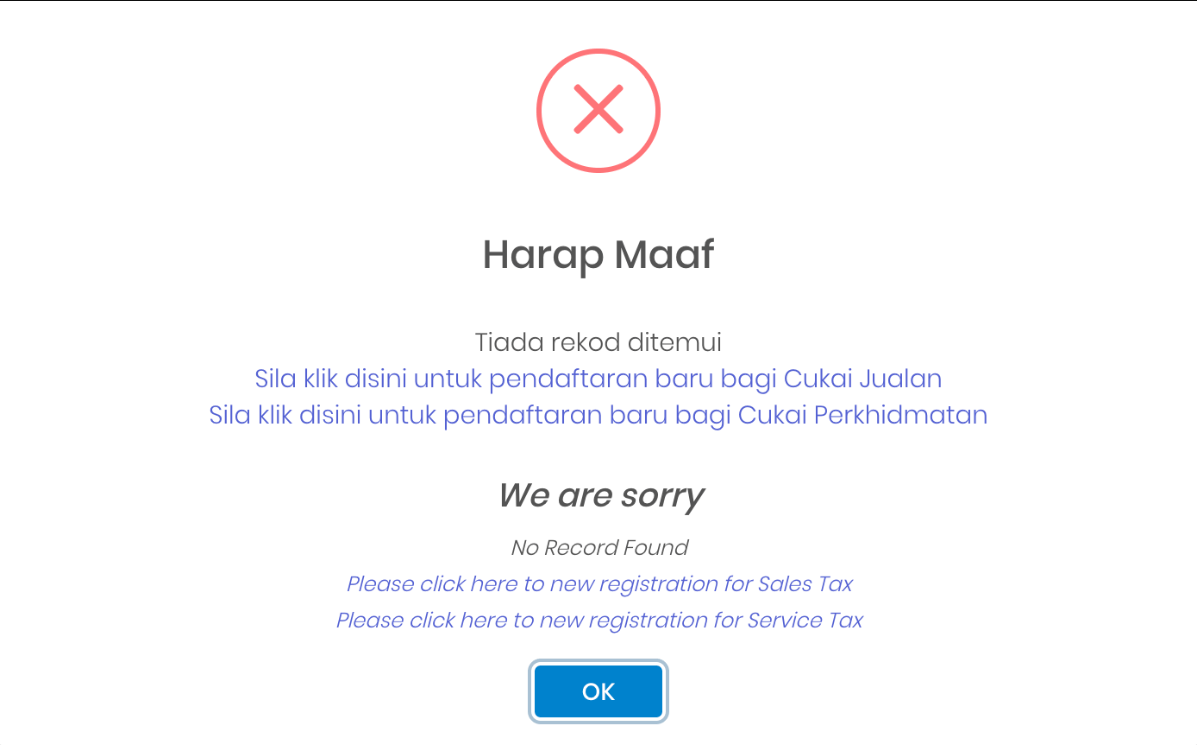 3. How Does This Affect My Pricing?
3. How Does This Affect My Pricing?
Regardless of whether you run a retail, F&B or service-oriented business, there are some pricing adjustments you need to take into account. There are 2 very simple scenarios in this case:
A. The Simplest Scenario
If you’re selling a cup of coffee for RM10.60 because it’s priced with 6% GST. Now, with Zero Rated GST, the price will be reduced to RM10.
Kinda like Daiso.
B. A Little More Complicated
Let’s say your cup of coffee is RM10 and already inclusive of GST. How do you adjust the pricing? You will have to deduct the 6% which then gives you the total of RM9.43396 – but of course that number is a little too messy for receipts. We highly suggest rounding it up or down to the nearest 5 cents.
Check with your POS vendor if there’s a simple way to bulk edit your pricing. StoreHub, for instance, will be rolling out a quick bulk pricing edit function to assist our >2,500 Malaysian customers who are impacted by this (Update: #StoreHubbers, we’ve released a one-click GST Price Adjustment tool to help you bulk edit everything and save a ton of time. Check your inbox for the guide, or go here).
2. If you’re not registered, apply for Sales Tax or Service Tax at the MySST website depending on the nature of your business (eg: manufacturer/importer = sales tax, cafe/retailer = service tax). A GST-registered business will get approval within 24 hours.
Approval will take a little longer for a business that is not GST-registered (the approval time has not been specified by Customs).
Get more info on business registration for the SST here!
6. How does the SST affect my pricing?
 3. How Does This Affect My Pricing?
3. How Does This Affect My Pricing?
Regardless of whether you run a retail, F&B or service-oriented business, there are some pricing adjustments you need to take into account. There are 2 very simple scenarios in this case:
A. The Simplest Scenario
If you’re selling a cup of coffee for RM10.60 because it’s priced with 6% GST. Now, with Zero Rated GST, the price will be reduced to RM10.
Kinda like Daiso.
B. A Little More Complicated
Let’s say your cup of coffee is RM10 and already inclusive of GST. How do you adjust the pricing? You will have to deduct the 6% which then gives you the total of RM9.43396 – but of course that number is a little too messy for receipts. We highly suggest rounding it up or down to the nearest 5 cents.
Check with your POS vendor if there’s a simple way to bulk edit your pricing. StoreHub, for instance, will be rolling out a quick bulk pricing edit function to assist our >2,500 Malaysian customers who are impacted by this (Update: #StoreHubbers, we’ve released a one-click GST Price Adjustment tool to help you bulk edit everything and save a ton of time. Check your inbox for the guide, or go here).
As long as you provide a taxable service as a retail/F&B/service-oriented business, you will need to charge 6% service tax on the particular service that you provide (eg: F&B/hotel room/parking space/etc.).
Check out page 3 of this guide on taxable services, available in ENG or BM.
You have two options in terms of pricing:
- Option A:
Add the 6% service tax on top of your current price - Option B:
Absorb the 6% service tax to maintain your current price
Service Tax example:
You’re a restaurant owner who sells a RM10.00 latte.
You add a 6% service tax charge to your receipt for your service of preparing the latte.
Your customer will then pay RM10.60.
“Wait… What about service charge?”
Service Charge (tips for your employees) example:
Subtotal = RM10.00
Service charge (10%) = RM1.00
Service tax (6% excluding service charge) = RM0.60
Total bill = RM11.60
IMPORTANT: Do not include a service charge in your service tax calculation. Service tax is not imposed on service charge. Service charge is not a government tax, but a fee that is charged by a service provider (eg: restaurant/hotel/etc.) for delivering a service.
That’s it!
Check with your POS vendor on how you can edit your prices.
The downside to the SST is that you can’t bulk edit your pricing as the SST does not affect everything (P/S: #StoreHubbers, here’s our simple price editing guide, which we’ll be emailing to you soon).
Also check with your POS vendor on when you can update your SST ID so that you don’t have to scramble on the 1st of September to update your system and receipt printouts. (#StoreHubbers, you can do this in your back office before the 1st of September 2018).
Okay, all set with pricing?
 3. How Does This Affect My Pricing?
3. How Does This Affect My Pricing?
Regardless of whether you run a retail, F&B or service-oriented business, there are some pricing adjustments you need to take into account. There are 2 very simple scenarios in this case:
A. The Simplest Scenario
If you’re selling a cup of coffee for RM10.60 because it’s priced with 6% GST. Now, with Zero Rated GST, the price will be reduced to RM10.
Kinda like Daiso.
B. A Little More Complicated
Let’s say your cup of coffee is RM10 and already inclusive of GST. How do you adjust the pricing? You will have to deduct the 6% which then gives you the total of RM9.43396 – but of course that number is a little too messy for receipts. We highly suggest rounding it up or down to the nearest 5 cents.
Check with your POS vendor if there’s a simple way to bulk edit your pricing. StoreHub, for instance, will be rolling out a quick bulk pricing edit function to assist our >2,500 Malaysian customers who are impacted by this (Update: #StoreHubbers, we’ve released a one-click GST Price Adjustment tool to help you bulk edit everything and save a ton of time. Check your inbox for the guide, or go here).
Great, let’s move on!
7. My business is SST-registered. What do I do next?
 3. How Does This Affect My Pricing?
3. How Does This Affect My Pricing?
Regardless of whether you run a retail, F&B or service-oriented business, there are some pricing adjustments you need to take into account. There are 2 very simple scenarios in this case:
A. The Simplest Scenario
If you’re selling a cup of coffee for RM10.60 because it’s priced with 6% GST. Now, with Zero Rated GST, the price will be reduced to RM10.
Kinda like Daiso.
B. A Little More Complicated
Let’s say your cup of coffee is RM10 and already inclusive of GST. How do you adjust the pricing? You will have to deduct the 6% which then gives you the total of RM9.43396 – but of course that number is a little too messy for receipts. We highly suggest rounding it up or down to the nearest 5 cents.
Check with your POS vendor if there’s a simple way to bulk edit your pricing. StoreHub, for instance, will be rolling out a quick bulk pricing edit function to assist our >2,500 Malaysian customers who are impacted by this (Update: #StoreHubbers, we’ve released a one-click GST Price Adjustment tool to help you bulk edit everything and save a ton of time. Check your inbox for the guide, or go here).
Unless you’re a manufacturer or importer, it’s simply a matter of adding service tax (if applicable) at the end of your receipt.
You also need to update your SST ID.
This system will be different compared to the GST, which had to be included in the price of an item.
Be sure that your current POS system allows you to add a 6% service tax, where applicable.
This change will be messy at first, so to ensure a smooth transition, check that your accounting and POS systems will allow you to:
- update your pricing and tax rate easily and quickly;
- keep track of the amount of service tax that needs to be paid to Customs;
- sync transactions (inclusive of service tax) with QuickBooks Online.
It’s crunch time for a lot of businesses, so using cloud-based accounting and POS systems will definitely help you speed up your process and work flow.
Key GST to SST takeaways
- Check your SST registration
- Talk to your POS vendor
- Talk to your accounting software vendor
- Update your SST ID and invoice format
 3. How Does This Affect My Pricing?
3. How Does This Affect My Pricing?
Regardless of whether you run a retail, F&B or service-oriented business, there are some pricing adjustments you need to take into account. There are 2 very simple scenarios in this case:
A. The Simplest Scenario
If you’re selling a cup of coffee for RM10.60 because it’s priced with 6% GST. Now, with Zero Rated GST, the price will be reduced to RM10.
Kinda like Daiso.
B. A Little More Complicated
Let’s say your cup of coffee is RM10 and already inclusive of GST. How do you adjust the pricing? You will have to deduct the 6% which then gives you the total of RM9.43396 – but of course that number is a little too messy for receipts. We highly suggest rounding it up or down to the nearest 5 cents.
Check with your POS vendor if there’s a simple way to bulk edit your pricing. StoreHub, for instance, will be rolling out a quick bulk pricing edit function to assist our >2,500 Malaysian customers who are impacted by this (Update: #StoreHubbers, we’ve released a one-click GST Price Adjustment tool to help you bulk edit everything and save a ton of time. Check your inbox for the guide, or go here).
Right now, there are a lot of different opinions out there on the move from GST to SST.
Some SME business owners think that it will affect profitability due to its threshold. Other business owners prefer it, as accounting will be easier and cheaper. At this point in time, it’s safe to say that most business owners still do not fully understand how the SST works.
If in doubt, send an official e-mail to Customs with your enquiry.
Calls and messages are not being answered at this moment by Customs (we’ve tried!), so it’s good to have solid proof of your attempt to get clarification.
We’ll be updating this article as we get more meaningful updates for you and business, so stay tuned!
In the meantime, #StoreHubbers, check out this guide on how to adjust your pricing for SST.
And if you’re not a StoreHubber yet, why wait?
Let us hook you up with an awesome StoreHub cloud-based iPad POS system that’ll help power your business! 😉
Power your retail or restaurant business with StoreHub
